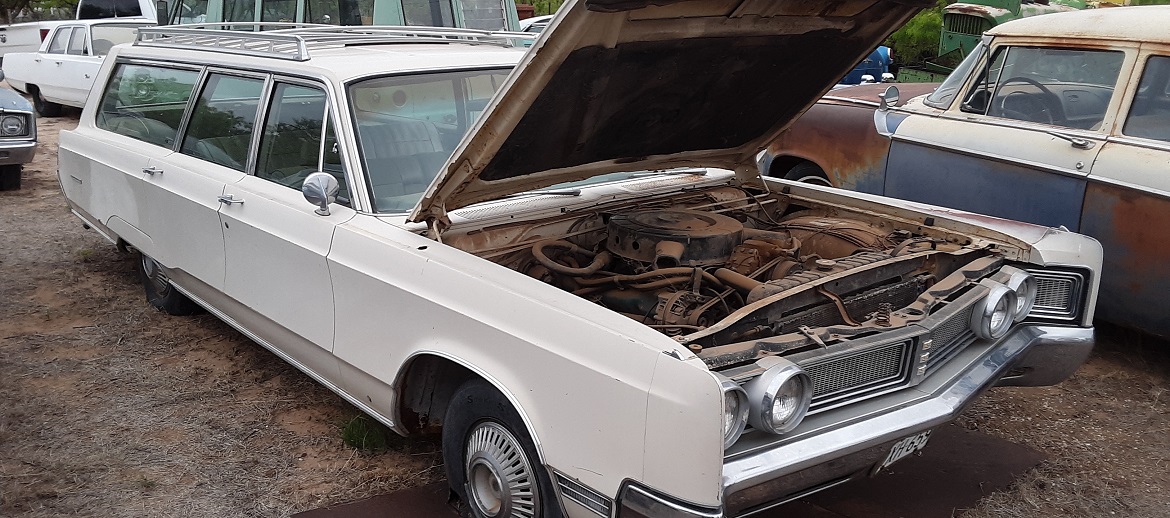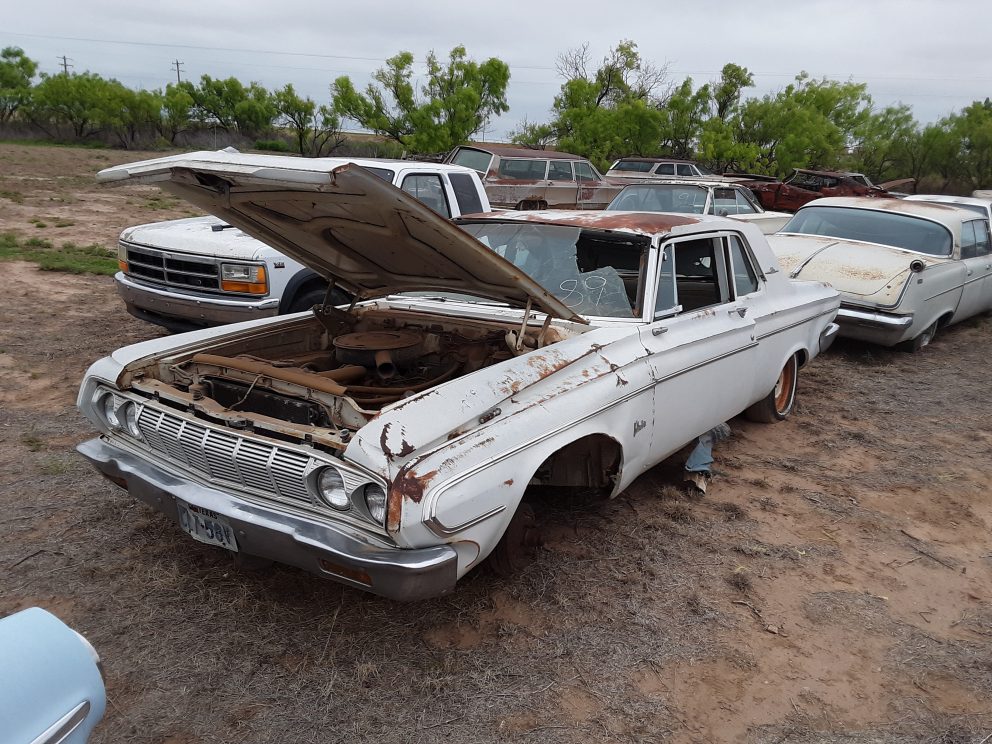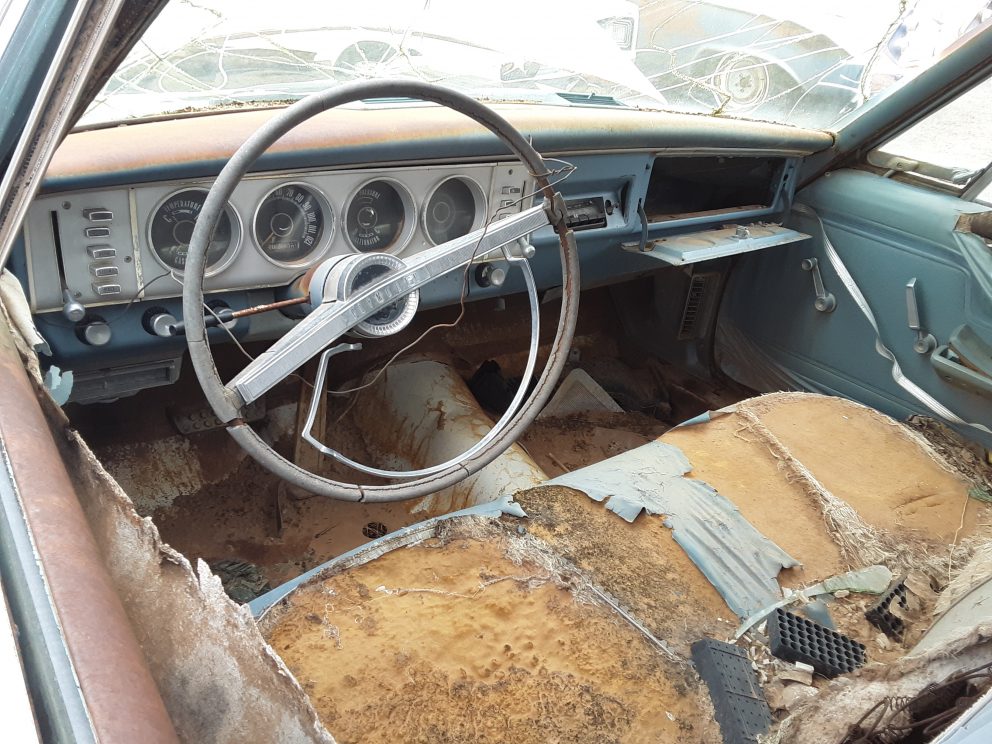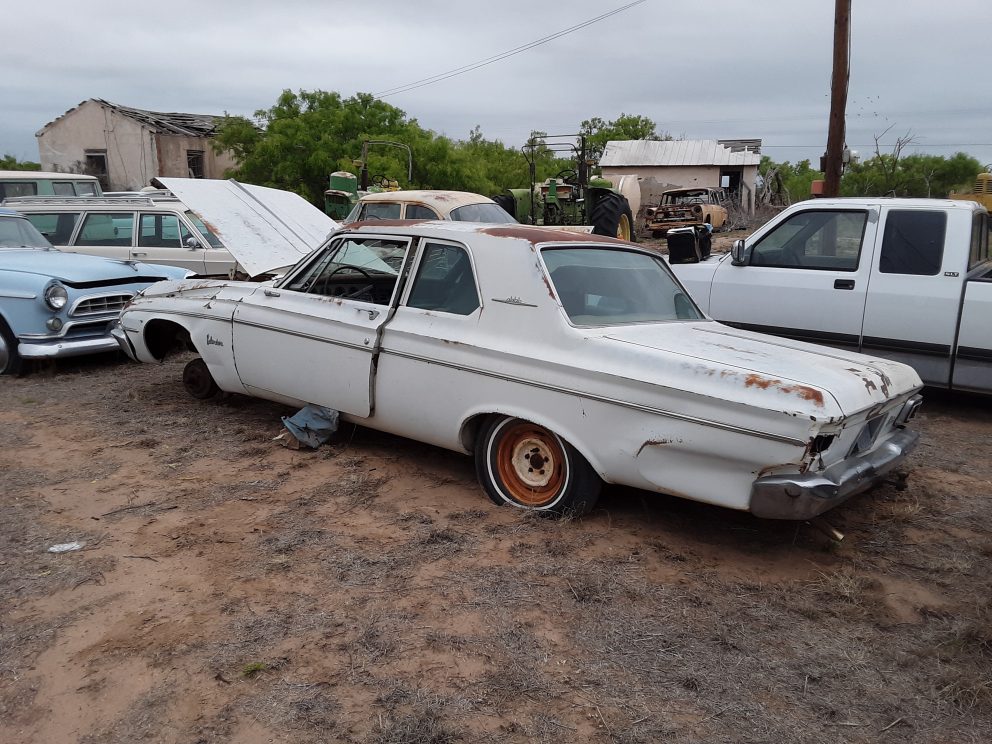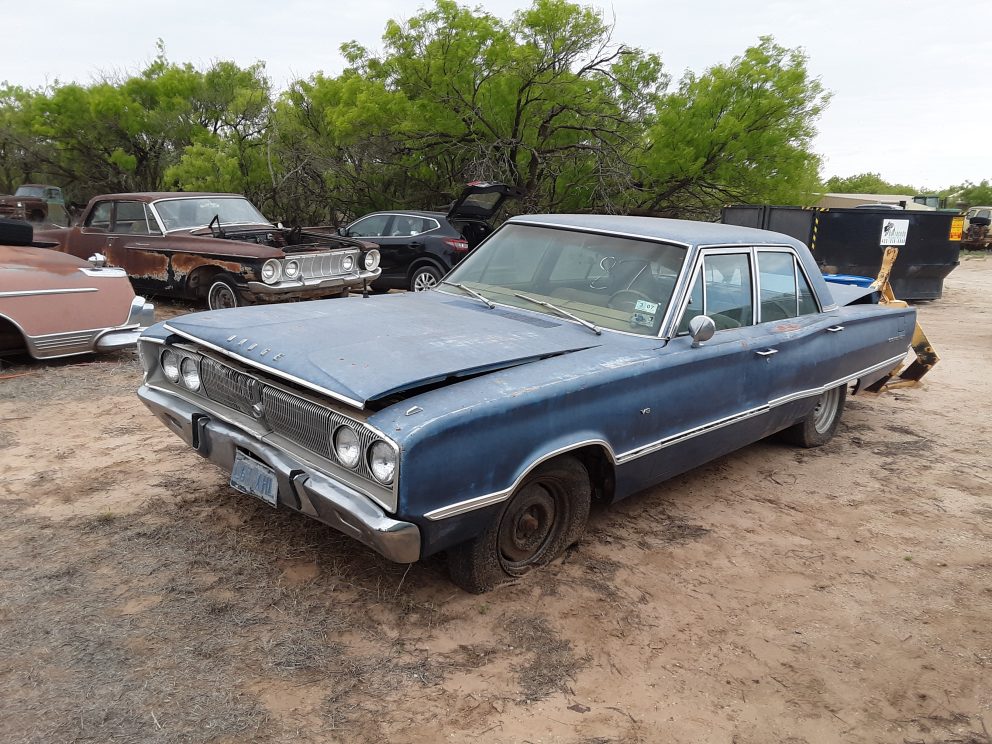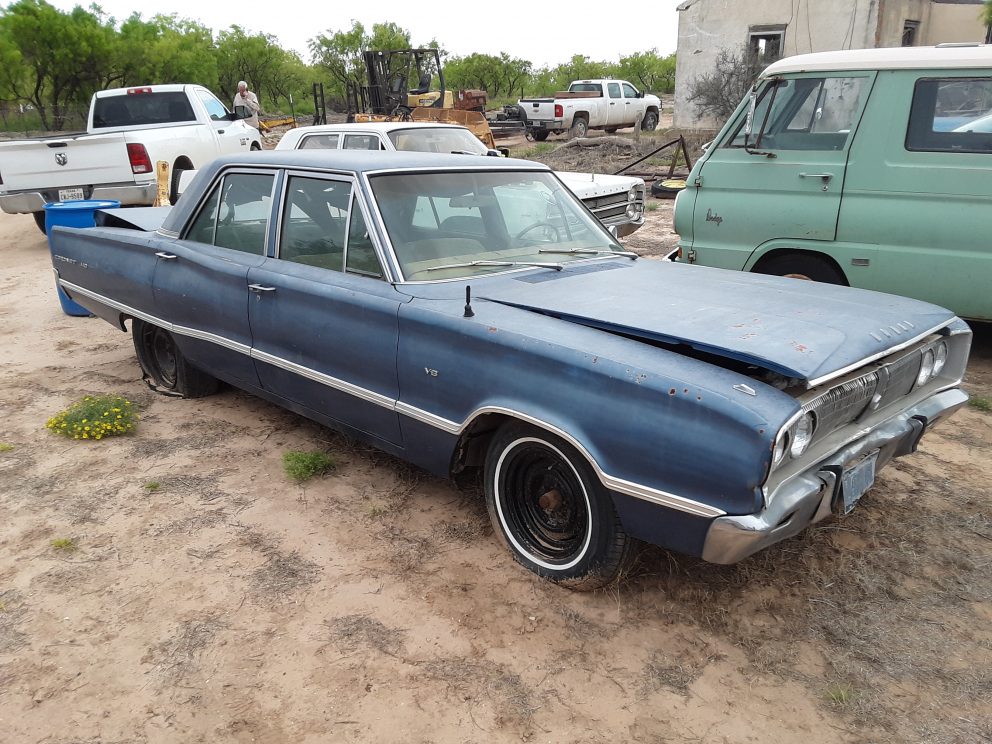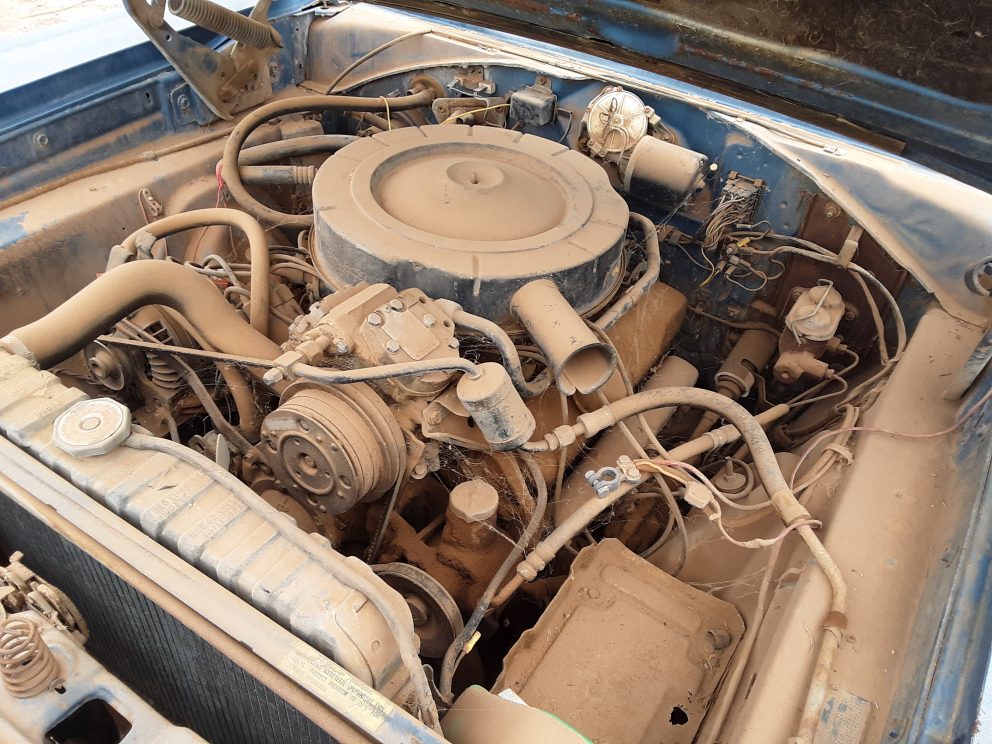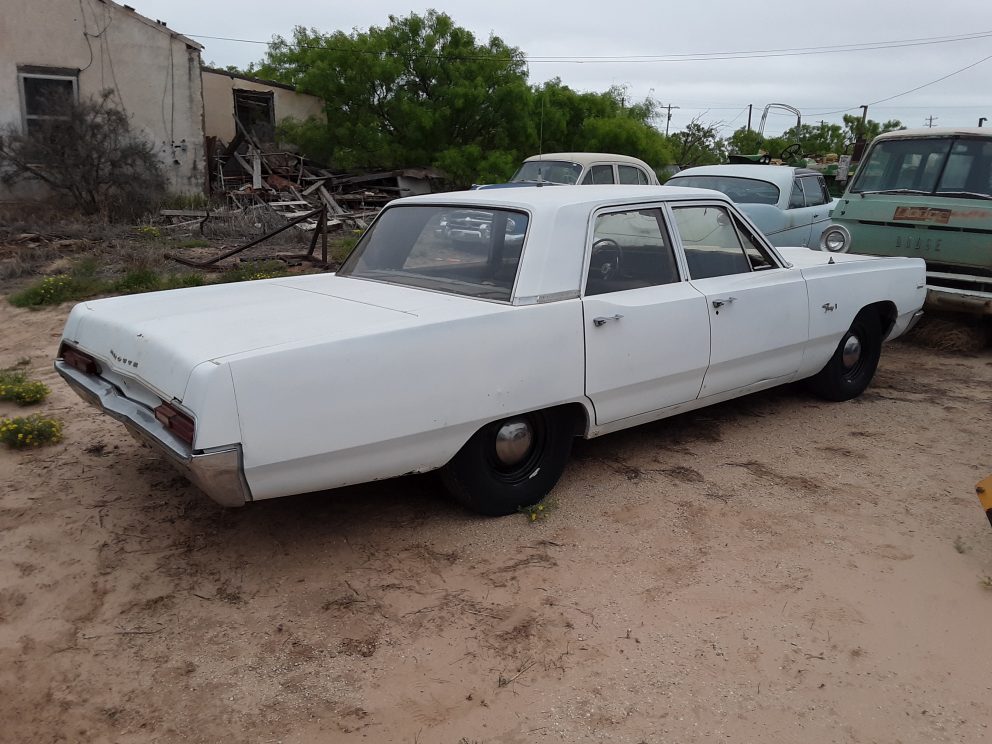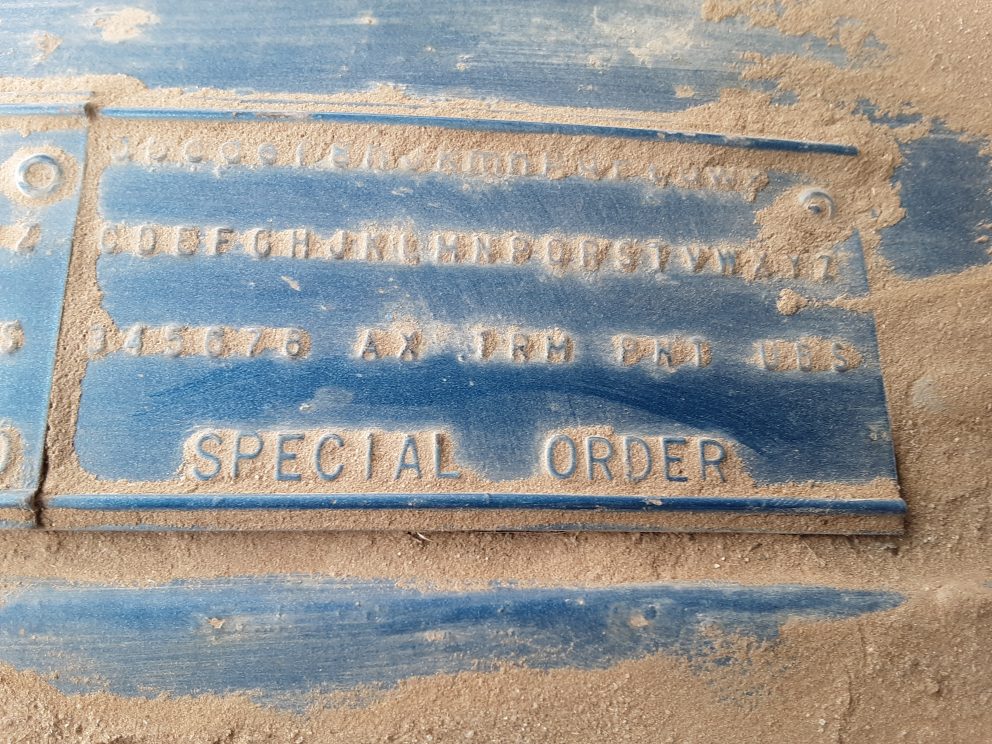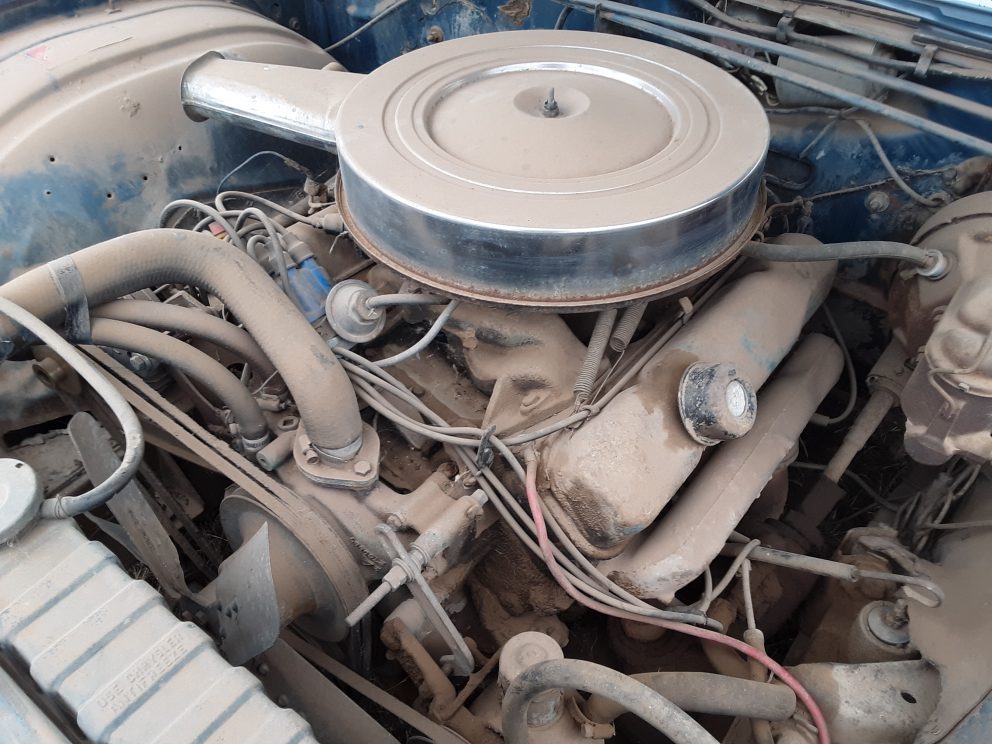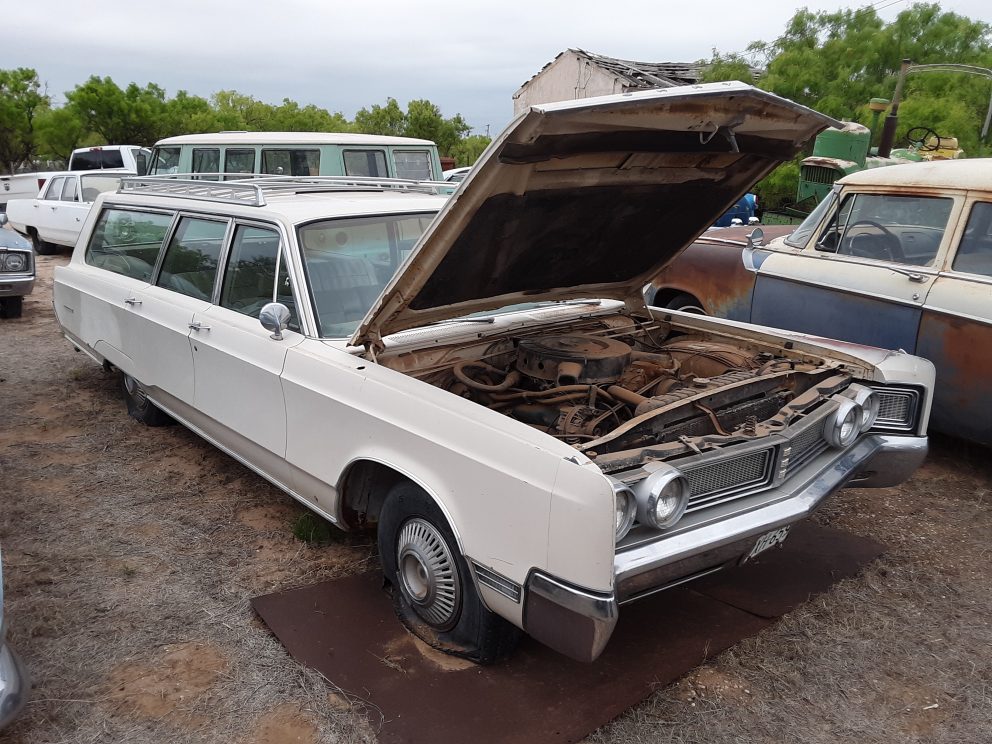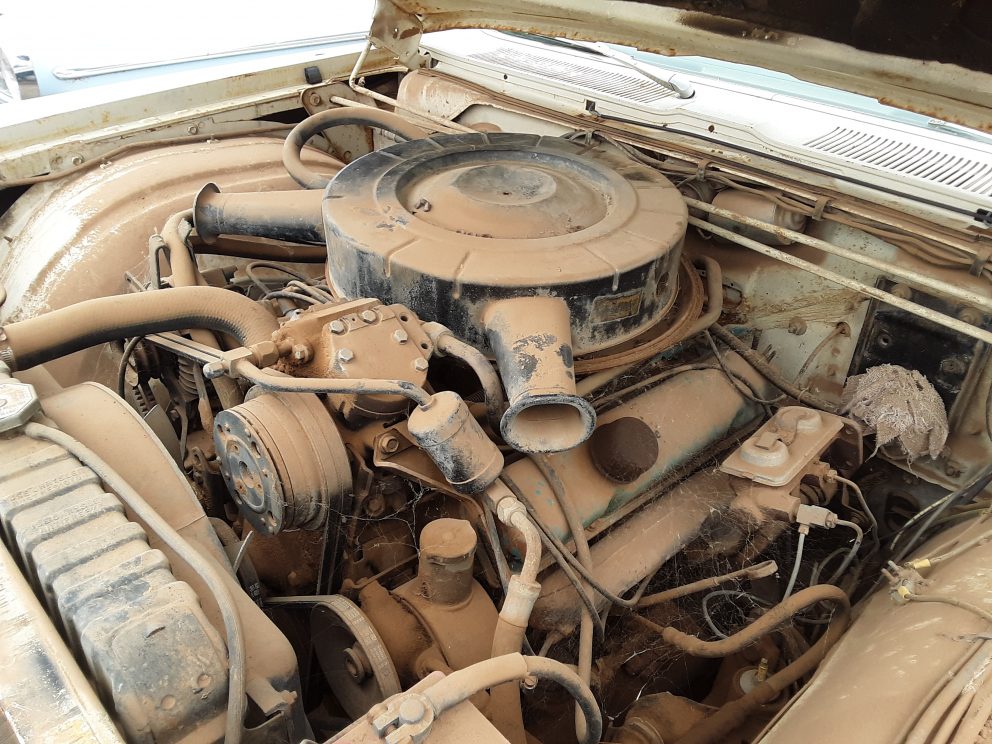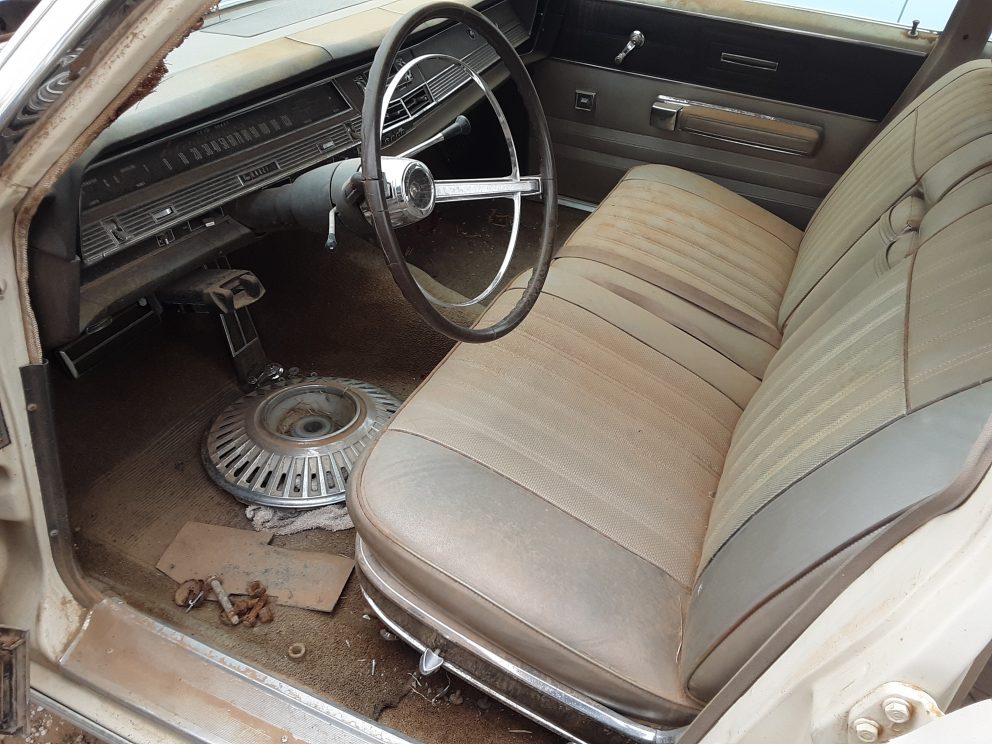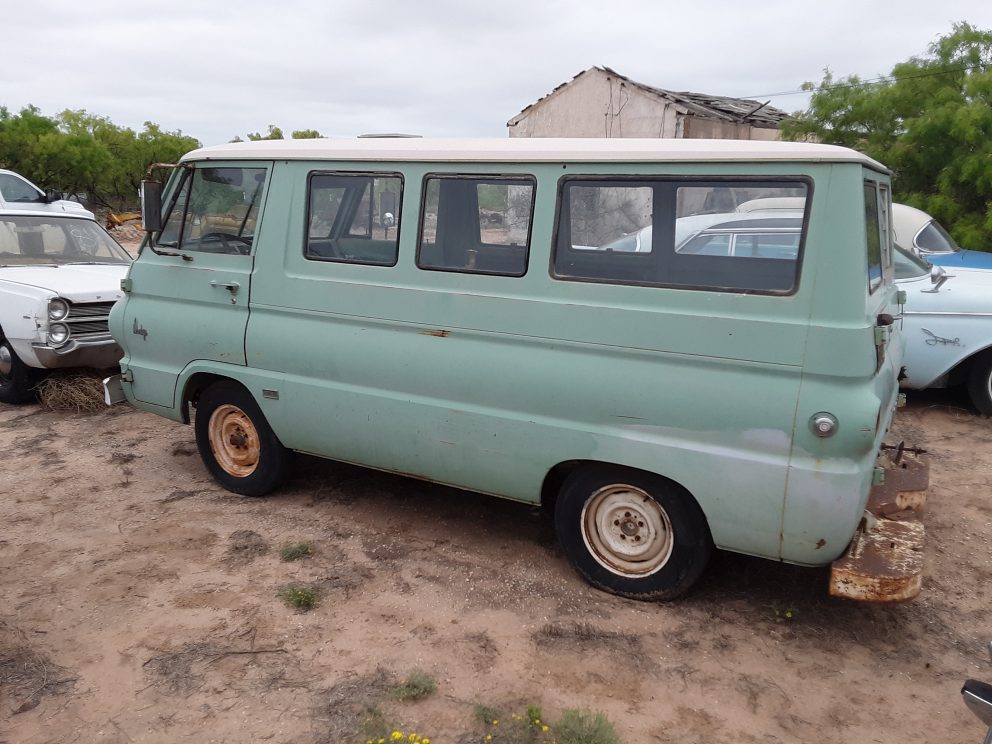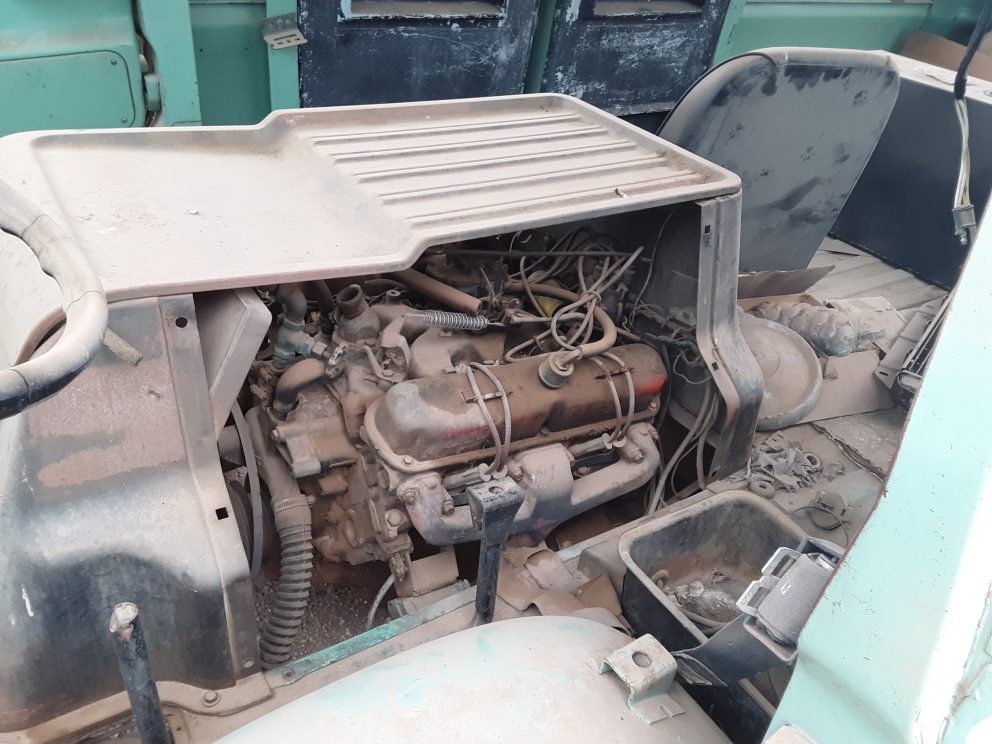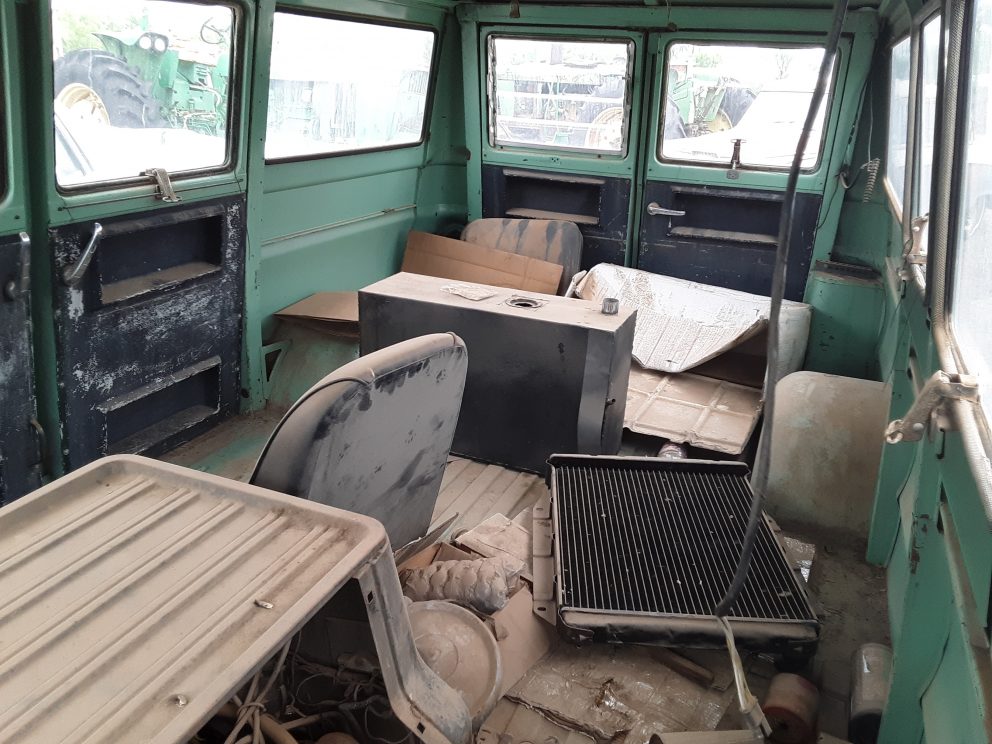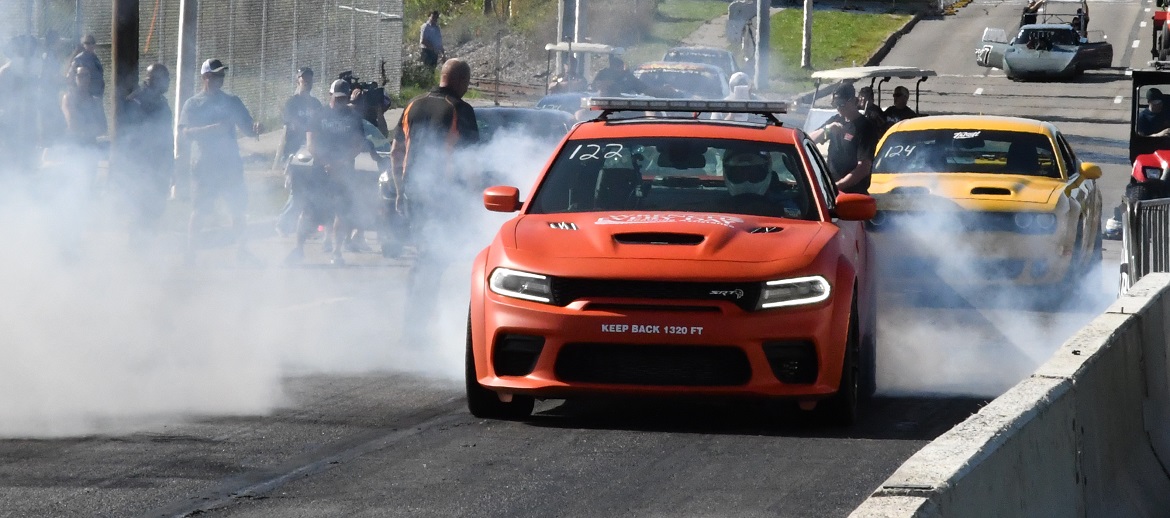The Great Texas Mopar® Auction: Part X
4 years ago Events Video
Excitement is building … the Great Texas Mopar® Hoard Auction Event is drawing near. Mark your calendar for Wednesday and Thursday, October 13 and 14, 2021. Those are the dates when Spanky Assiter and his Freedom Car Auctions team will conduct an all-online, no-reserve auction of the late John Haynie’s massive collection of mostly Mopar cars and parts.
Remember, this is an online-only event so make sure your computer is warmed up and your internet connection is strong. The reason for the online-only nature – as opposed to an on-site auction with the usual gathered crowd of bidders – is the fact the massive estate is located outdoors, on a ranch in the remote Texas prairie, too far off the beaten path to expect most folks to even find it.
More specifically, the estate sits on several acres with a small house surrounded by a handful of metal sheds and garages. It’s like “The Little Mopar House on the Prairie”. The parts are stored indoors but most of the 250-plus vehicles are outside under the bright Texas sun. Staging an outdoor auction in Texas is asking for discomfort due to heat, sunburn, wind and possible rain. And there’s the rattlesnake factor. Our slithering, venomous friends populate the Texas prairie like fish do the sea, so special care must be taken when walking among the 250-plus vehicles.
Added together with the fact that few hotels and restaurants exist within the immediate vicinity of John Haynie’s former home and Mopar hoard, it was decided to use the internet to stage the auction. There is nothing new or experimental about internet auctions and every day all over the globe sellers and buyers successfully connect in this way.
But the absence of in-person vehicle bidder inspection requires as many pictures and videos as possible to best describe and identify each item being sold.
And so let’s continue that process here with another preview of the Great Texas Mopar Hoard Auction Event!
1964 Plymouth Belvedere: Lot #89
Chrysler Corporation launched its new mid-size B-body platform in 1962 as the Dodge Dart 330, Dart 440 and Polara 500, as well as the Plymouth Savoy, Belvedere and Fury. With its combination of light yet rugged unibody construction, space-efficient torsion bar front suspension, novel 1/3 – 2/3 rear leaf spring axle location and wide choice of power plants, the mid-sized B-body set the stage for a successful decade of competition with similarly sized offerings from Ford and GM.
But there was a snag. The styling of the 1962s was somewhat bizarre. Deltoid and asymmetrical themes dominated and sales suffered. The situation was better in 1963 as more conservative styling was adopted, but it wasn’t until 1964 that the ship righted itself. This 1964 Plymouth Belvedere two-door sedan (Lot Number 89) is a great example of the sleeker, less exotic styling that helped Chrysler Corporation do its best work in the mid-sized field.
And while the top-tier Fury, with its neat inverted triangle B-pillars, used to be the most sought-after closed model (convertibles have always ruled the roost among collectors), recent years have marked a shift toward low-line Savoy and Belvedere sedans thanks to their popularity with builders of Max Wedge and Race HEMI® Super Stock clones. As such, this less-is-more sedan would be a prime candidate for Super Stock conversion except for the sad fact it spent some time on its side and roof at some point.
The accident damage isn’t terminal, but work will be required to smooth out the wrinkles. Originally equipped with extra cost luxuries like a poly 318, push button 727 small block automatic transmission, and Airtemp air conditioning, the rest of the package is austere, with manual drum brakes and steering – exactly what the Super Stock clone set desires most. Best of all is the boxy sedan roof. More commonly seen on the base model Savoy (where 21,326 two-door “posts” were built), the more expensive Belvedere series was more likely to feature the more graceful hardtop roof. As such, just 5,364 of these two-door sedans were built, compared to 16,334 hardtops. Don’t be dissuaded by the accident damage, this one is a solid core for a Max Wedge or race HEMI conversion.
1967 Dodge Coronet: Lot# 87
Though its “just a four-door,” this 1967 Dodge Coronet 440 (Lot Number 87) is special thanks to what’s under the hood. No, it’s not a 440 Magnum, something lots of folks assume thanks to the Coronet 440 nameplate. Rather, this one has the optional 383 big block V8. The base engine was the 225 Slant Six, with the 318 two-barrel small block offered for an extra $24. These two engines made up the majority of installations in these four-door family cars. But for those needing more passing and towing power, just $81 was all it took to enter the tire-smoking big block realm with the 383 seen in this car.
Seeking to appeal to economy-minded customers, Dodge (and Plymouth) offered the big 383 with a single two-barrel carburetor (making 270 horsepower) or for $121 with a four-barrel and dual exhaust making 325 horsepower. Interestingly, the 383 two-barrel engine shared its rather plain “V8” front fender medallion with the sleepy 318 small block. Only the four-barrel 383 got a special fender emblem reading “383 Four Barrel”. Thus, drivers of 383 two-barrel Coronets enjoyed something of a sleeper legacy. Would-be contenders didn’t know if the 318 or 383 lurked under hood until the tire smoke began – or didn’t.
This extremely solid Texas-based four-door has the expected factory Airtemp air conditioning (which includes the desirable HEMI-sized 26-inch radiator seven-blade aluminum clutch fan), power steering and three-speed windshield wipers, but is odd for its manual drum brakes, which would have added a mere $16, but for reasons unknown, were not specified.
Getting back to the confusion surrounding the Coronet 440 nameplate, it stems from the Coronet marketing hierarchy which was made up of (from bottom to top) the Coronet Deluxe, Coronet 440, Coronet 500 and Coronet R/T. Following the commonly mistaken logic that would assume every Coronet 440 packs a 440-cubic-inch Magnum, the Coronet 500 would be the ultimate muscle machine, with 500 cubic inches. But it was not so. The top muscle machine for 1967 was the strictly two-door Coronet R/T series (R/T stands for Road and Track … but you knew that) that came with base 440 Magnum or optional 426 Street HEMI engine power. This 383-powered four-door may not be a HEMI engine-powered vehicle, but its 383 surely surprised many a GM 350 owner.
1967 Plymouth Fury I Police: Lot #86
The fender tag reads “Special Order” and this 1967 Plymouth Fury I four-door sedan (Lot Number 86) certainly is special. Beyond the austere hub caps and special 15×5.5-inch fleet rims with their riveted retention clips, the absence of flashy trim, A-pillar mounted spotlight and Commando V8 fender emblems alert the presence of a police car. Often called “muscle cars with an extra set of doors,” police cars often – but not always – contain high-performance driveline and suspension equipment.
Here, the VIN reads PK41G74235810, the “P” confirming the police model and the “G” in the fifth spot identifying the 383 big block V8. But unlike the more typical 383 four-barrel or even 440 Super Commando power expected in a police car, the G-code 383 is the more economical unit with a single exhaust tract and small two-barrel carburetor. Regardless, it’s a big jump above the possible 225 Slant Six or 318 small block V8. Yes, these low-power engines were available for inner city patrol work where high speed wasn’t required but maximum fuel economy was.
Under the skin, as a police unit, its got heavy-duty suspension with thicker torsion bars, full-size 11-inch drum brakes – the same stuff used on 426 Street HEMI engine-powered vehicles – special zinc liners between the leaves of the rear leaf spring suspension and inside, a certified 120 mph speedometer, thick molded rubber floor mat resists the stains and wear that would have plagued a family-style carpeted interior. Though the “RXX982” license plates suggest Arizona origins, there are some rusty spots on the floors and signs of delaminating plastic filler pock mark the body. Regardless, while records show that Plymouth built 29,354 Fury I four-door sedans in 1967, a small fraction of them were PK series police units. The number remaining today is surely minute.
1967 Chrysler Town and Country: Lot #85
Chrysler Corporation made automotive – and cultural – history with the introduction of the so-called “minivan” in 1983. With its economical and practical union of front-wheel drive, great fuel economy and smart utility-minded design, the traditional American station wagon was soon rendered obsolete – and an entirely new market segment was created to serve “soccer moms” across the world. This 1967 Chrysler Newport Town and Country (Lot Number 85) is a classic example of the massive station wagons the minivan helped to dethrone.
One of 14,703 Newport Town and Country wagons built, this one has the optional 440 four-barrel, a $79.40 upcharge over the base 383 two-barrel big block V8. The legendary performance of the 440 doesn’t need retelling here, but the fact it’s still under the hood speaks to this car’s incredible luck over the past 55 years, Ever since the tall deck 440 appeared in 1966, these full-size Chryslers were targeted by Slant Six and 318 small block owners looking to snatch their hearts for Dart and Duster conversions.
Typically equipped with Airtemp air conditioning ($406), power steering ($107), power brakes ($47), power windows ($106) and add-on (non-factory) electric trailer brakes, this family mover probably hauled a large camper or fishing boat trailer. In pristine condition with minimal surface rust, this surviving 440 station wagon appears to wear its factory-applied white paint. And as always, there is a distinct possibility the rear axle contains a nifty Sure Grip surprise within its beefy 8-3/4 inch carrier. We couldn’t lift the tail to find out but as a trailer towing workhorse, its original owner likely saw the value in the $50.70 outlay for Sure Grip.
Happily, today we have several aftermarket and reproduction 440-type engine blocks and crate engines to choose from. That means this nicely preserved wagon can stop shaking in fear every time a hot rodder walks near. We hope…
1966 Dodge A100 Sportsman Van: Lot #84
The Dodge A100 wasn’t the first compact van on the scene. That designation goes to Ford’s trend-setting Falcon Econoline of 1962 – or to some minds, Chevrolet’s Americanized Volkswagen Microbus, the 1961 Chevrolet Corvair 95 Corvan. Regardless, when Dodge entered the compact van market in 1964 with the A100, it was the only one with an optional V8, the all-new 273 small block, also introduced in 1964. And let’s not forget how Jay Howell and Dick Branstner’s Little Red Wagon A/FX A100 pickup (later adopted by Bill “Maverick” Golden) helped launch the 426 Race HEMI engine to race fans late in 1964. And we do mean “launch.” When Howell couldn’t keep the front tires on the strip, Golden cultivated the “Little Red” into a single-purpose wheel-standing exhibition machine.
This amazingly original 1966 Dodge A100 Sportsman passenger van (Lot Number 84) is one of the 9,536 V8 powered A100s that year. The other 35,190 (of 44,726 total built) were motivated by the trusty Slant Six. As a Sportsman people mover, this 273 V8-powered machine has eight windows for optimum visibility and comfort on long road trips. By contrast, the more utilitarian A100 vans could be had with several possible window and door configurations, including no windows at all (one of these is part of the Great Texas Mopar Hoard Auction Event and is offered as Lot Number 55). More typically, worker bee A100s had windows on only the passenger side so the delivery driver could see the curb and sidewalk for parking (and yes, one of these is also offered in the auction as Lot Number 59).
Here, a 727 TorqueFlite® automatic transmission sends power to the 3.55:1 gears within the 8-3/4 rear axle. We know it was built with the 3.55 gear ratio thanks to the metal data tag riveted atop the driver side front wheel arch – a helpful detail found on all A100s – that also spells out suspension details, the VIN and other features. Speaking of VIN tags, another A100 van in this auction (Lot Number 11) wears serial number “2000604”, which verifies it as the six hundred and fourth (604th) A100 van ever assembled! That van also happens to have the extremely rare “walk through” body – with swing out cargo doors on both sides, driver and passenger. Again, that one is Lot Number 11 and can be seen at the Steve Magnante YouTube Channel or at the Spanky’s Freedom Car Auctions website (FreedomCarAuctions.com).
But getting back to this 1966 Sportsman, though the engine cover has been disassembled for some unfinished business and the rear passenger bench seats seem to be missing, the beauty here is how original and unmolested the basic structure is. They just aren’t found like this anymore.
Well, that’s it for this week’s preview of the Great Texas Mopar Hoard Auction Event. We’ll be back next week with another “bouquet” for your enjoyment. See you then!
Check out these other great Mopar vehicles that are up for grabs:
The Great Texas Mopar Auction: Preview
The Great Texas Mopar Auction: Part II
The Great Texas Mopar Auction: Part III
The Great Texas Mopar Auction: Part IV
The Great Texas Mopar Auction: Part V
The Great Texas Mopar Auction: Part VI
The Great Texas Mopar Auction: Part VII
The Great Texas Mopar Auction: Part VIII
The Great Texas Mopar Auction: Part IX
The Great Texas Mopar Auction: Part XI
The Great Texas Mopar Auction: Part XII
The Great Texas Mopar Auction: Part XIII
The Great Texas Mopar Auction: Part XIV
The Great Texas Mopar Auction: Part XV
The Great Texas Mopar Auction: Part XVI
